Régence style is a transitional design style born in France during the regency of Philippe II, between 1715 and 1723.
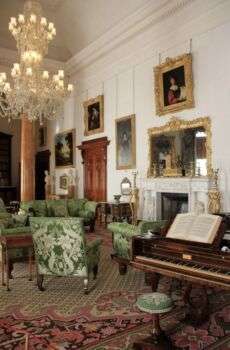
Image source: https://search.creativecommons.org/photos/fc340028-9c51-401c-868d-60ad911ecba0 by Karen Roe
Régence Style Origins
Régence refers to the period of the 18th century France when the duke of Orléans ruled the country for his grandnephew Louis XV, who was only five when he inherited the throne. The Régence style was applied first to decorative arts and interior design. By the end of Louis XIV’s reign, rich Baroque changed, preferring lighter elements, with a taste for complex forms. It included oriental designs and asymmetric proportions.
Régence Furniture
Régence is best understood as a state of mind, a turn toward intimacy, hedonism, and pleasure. It is a transitional style that employed ornamentation for its elegance. The woodworking generally displayed plain lines and surfaces with slender legs and right angles. This helped highlight ornaments by providing a quite simple background to avoid distractions. Cabinets and shelving units used height to help decorate walls with paintings.

Image source: https://search.creativecommons.org/photos/1beaccf9-0414-4532-b8e6-89145cb86df4 by Karen Roe
Régence Furniture’s Materials
The components of Régence furniture included wood and metal accents. Mahogany remained the most important material for furnishings, but ebony was featured in expensive pieces. Furniture makers primarily employed brass, bronze, or ormolu to imitate gold. Brass inlays were popular in this period. The most popular furniture in this style were commodes, bookcases, tables, table bureaus, drop-front secretaries, cupboards, center lights and lamps to be put on the walls.
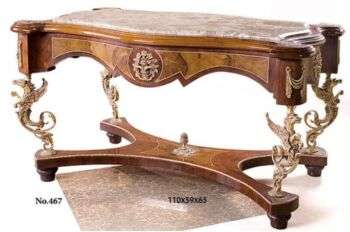
Image source: https://search.creativecommons.org/photos/c60b6b84-83df-4195-8ae9-8177774f7b2d by AntiqueTaste
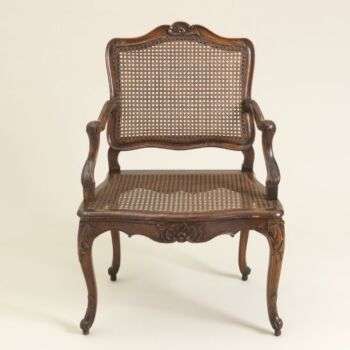
Image source: https://search.creativecommons.org/photos/224fa051-ba40-4e89-8d6b-2309c14fc5c6
The Importance of Ornament
Moldings were now in low relief. Smiling heads of fauns and women were often present and the lion’s head was no longer present. No more order and rigor were displayed. The decorators changed Louis XIV style ornaments to make all them cheerful and happier.
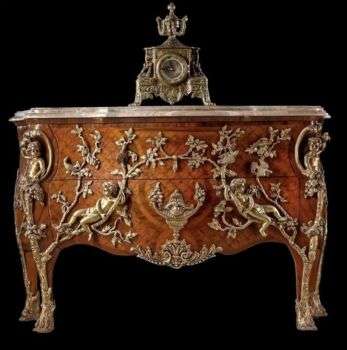
Image source: https://search.creativecommons.org/photos/1171b9cb-9a2d-48b3-9aa1-508b26f54c58 by AntiqueTaste
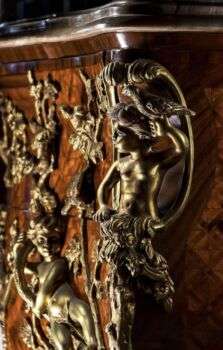
Image source: https://search.creativecommons.org/photos/f45b83a1-ad01-4743-bffb-98436c3f4630 by AntiqueTaste
The fireplace was an important feature of this style. Scrolls enhance its uprights and a hug crest houses a carved shell in the middle. Huygens invented the regulator in the late 17th century, which popularized the pendulum clocks that are on the bronzes of the Régence.
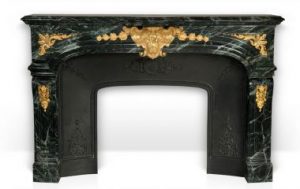
Régence Art
Early Rococo style heavily influenced the Régence art style. Antoine Watteau, a French painter whose worked to revive the interest in color and movement, revitalized Baroque‘s language. He invented the genre of fêtes galantes: scenes of bucolic and idyllic charm, with an air of theatricality. Some of his most famous subjects were from the world of Italian comedy and ballet.

Image source: https://it.wikipedia.org/wiki/File:Jean-Antoine_Watteau_-_F%C3%AAtes_Venitiennes_-_Google_Art_Project.jpg

Image source: https://commons.wikimedia.org/wiki/File:Antoine_Watteau_(1684%E2%88%921721)-_The_Swing_-_Keinu_-_Gunga_(29358967782).jpg by Jean-Antoine Watteau, Public domain, via Wikimedia Commons
Info source: https://www.britannica.com/art/Regence-style
